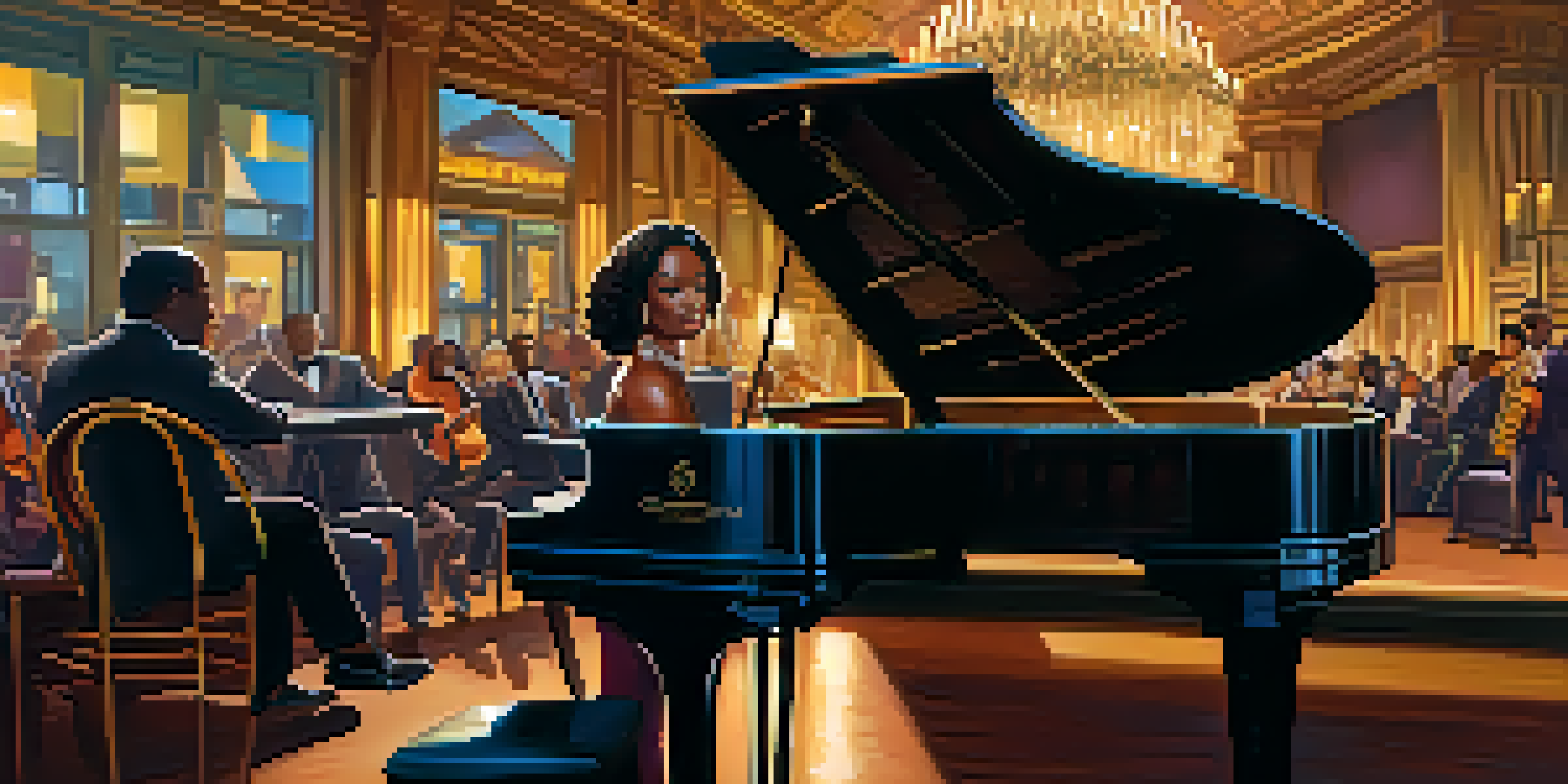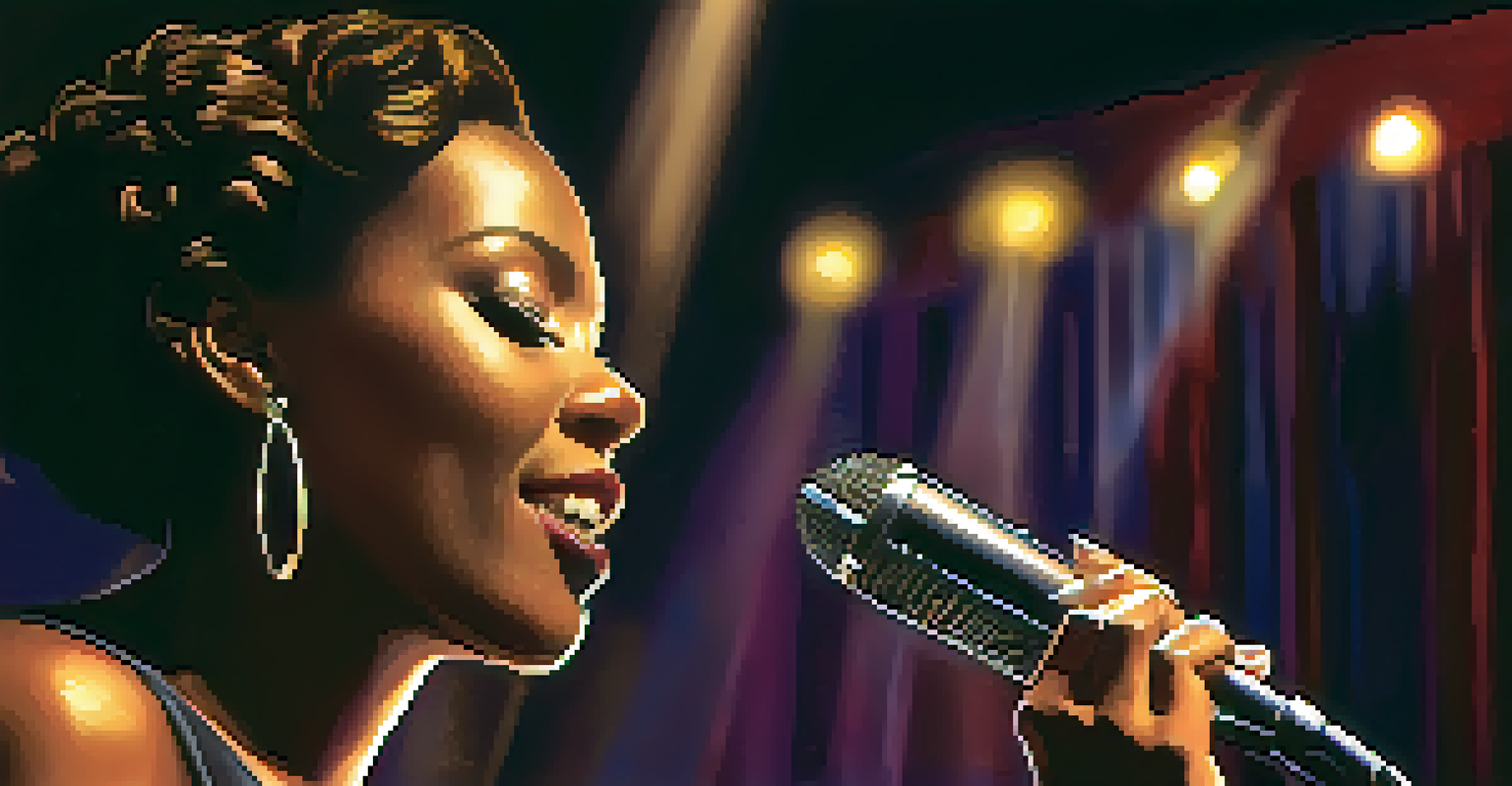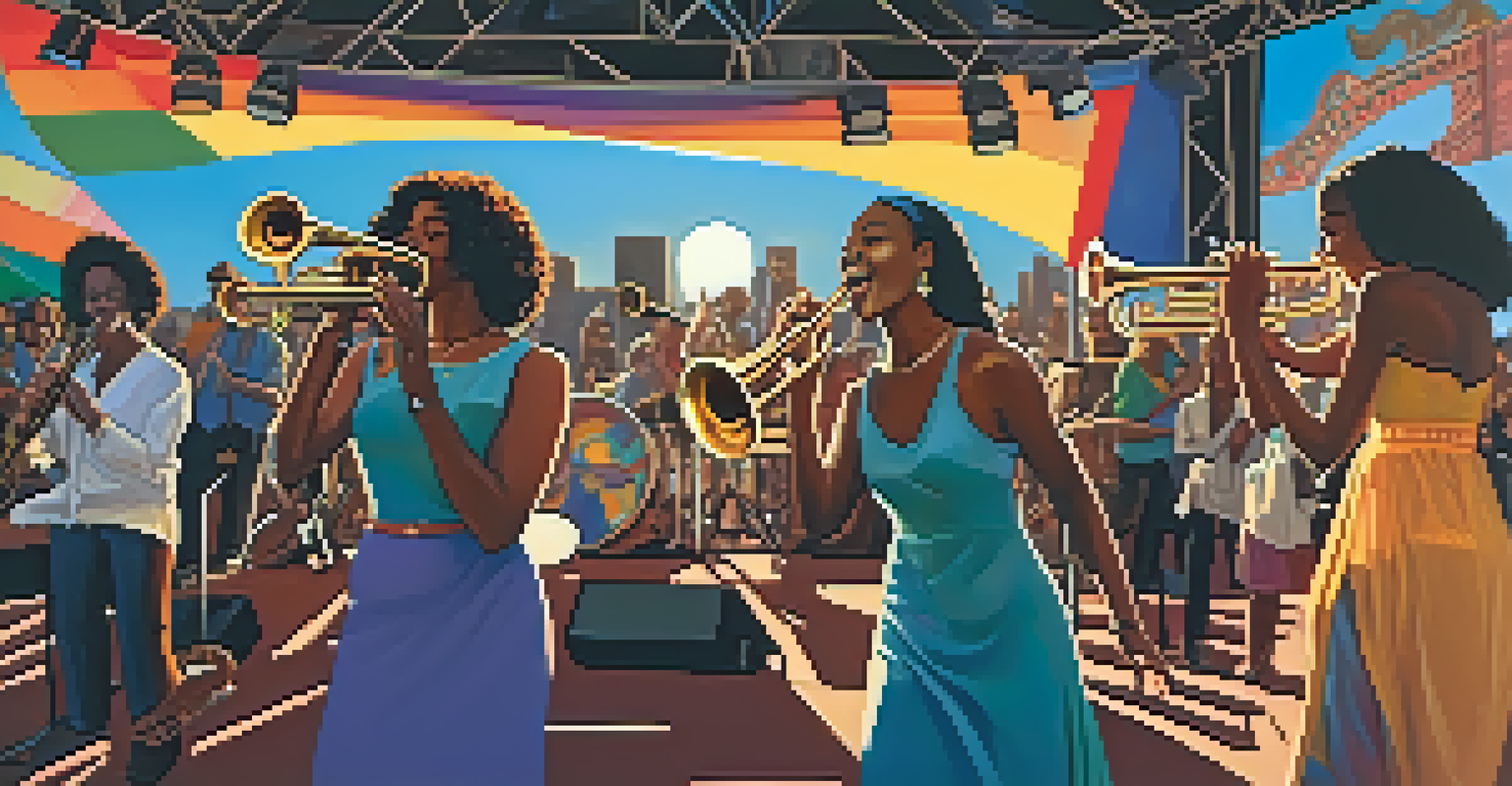Influential Women in New Orleans Jazz: A Celebratory Overview

The Roots of Women in New Orleans Jazz
New Orleans jazz has always been a vibrant tapestry of musical influences, and women have played a crucial role in its evolution. From the earliest days of jazz, female musicians brought their unique styles and perspectives, enriching the genre. Their contributions often go unrecognized, but understanding their roots helps us appreciate the profound impact they’ve made.
Jazz is a big part of who I am. It's the heart of my soul.
In the late 19th and early 20th centuries, women began to step into the limelight, defying societal norms. They not only performed but also composed and arranged music, showcasing their talents in a male-dominated field. This early involvement laid the groundwork for future generations of female jazz artists.
As we explore this rich history, it’s essential to recognize that the journey of women in New Orleans jazz is a story of resilience and creativity. Their influence is woven into the very fabric of jazz, inspiring countless musicians and listeners alike.
Trailblazers: The Pioneering Women of Jazz
One of the most celebrated figures in the early jazz scene is Lil Hardin Armstrong, a talented pianist and composer. As the wife of Louis Armstrong, she played a pivotal role in shaping his career while also establishing her own. Her compositions, like 'Struttin’ with Some Barbecue,' showcased her innovative style and creativity.

Another trailblazer, Billie Holiday, made waves with her distinctive voice and emotional depth. Although not originally from New Orleans, her influence permeated the jazz scene there. Holiday’s ability to convey profound feelings through music connected deeply with audiences, making her an enduring icon.
Women Shaped New Orleans Jazz History
Female musicians have been pivotal in the evolution of New Orleans jazz, contributing their unique styles and perspectives despite facing societal challenges.
These women, along with many others, broke barriers and paved the way for future generations. Their legacies continue to inspire aspiring musicians, proving that passion and talent can transcend limitations.
The Golden Era: Women in the Jazz Age
The Jazz Age of the 1920s marked a significant turning point for women in music, particularly in New Orleans. Jazz clubs and speakeasies became popular venues where female musicians could shine. This era saw an influx of talented singers and instrumentalists who captivated audiences with their performances.
I think the biggest way to make a difference is to be yourself and to be brave.
Artists like Ella Fitzgerald and Sarah Vaughan began to emerge during this time, showcasing their extraordinary vocal talents. Their ability to improvise and connect with the audience redefined what it meant to be a jazz performer. The energy of the Jazz Age allowed these women to embrace their artistry fully.
As the jazz movement continued to evolve, women became more than just performers; they became influential figures in the industry. Their presence in clubs and recordings helped elevate the genre, demonstrating that women could hold their own in a male-dominated space.
Modern Influences: Contemporary Women in Jazz
Fast forward to the present, and the legacy of women in New Orleans jazz continues to thrive. Contemporary artists like Trombone Shorty and the Preservation Hall Jazz Band exemplify the blending of traditional and modern jazz. Women like Charmaine Neville and Aurora Nealand have carved their own niches, showcasing their talents on local and international stages.
These modern musicians draw upon the rich history of their predecessors while infusing their unique perspectives into the music. Their contributions highlight the ongoing evolution of jazz, demonstrating that the genre remains vibrant and relevant today. Women are not just participants; they are leaders, composers, and innovators.
Challenges Still Persist for Female Artists
Women in jazz continue to confront issues like gender bias and limited access to performance opportunities, highlighting the need for ongoing advocacy and support.
The presence of women in contemporary jazz serves as a reminder of the enduring impact of their predecessors. As new generations of female artists emerge, they continue to push boundaries and redefine jazz for audiences around the world.
The Role of Education in Women's Jazz Journeys
Education plays a vital role in nurturing the next generation of female jazz musicians. Institutions like the New Orleans Center for Creative Arts (NOCCA) provide young artists with the tools and training they need to succeed. These programs foster a supportive environment where girls can explore their musical interests and develop their skills.
Mentorship is another crucial aspect of this educational journey. Established artists often share their experiences and knowledge with younger musicians, creating a sense of community. This guidance helps aspiring jazz musicians navigate challenges and build confidence in their abilities.
By investing in education and mentorship, we ensure that the legacy of women in New Orleans jazz continues to thrive. Supporting young female musicians not only honors those who came before them but also paves the way for a brighter future in jazz.
Challenges Faced by Women in Jazz
Despite the remarkable contributions of women in jazz, they have faced numerous challenges throughout history. Gender bias and societal expectations often limited their opportunities, making it difficult for them to gain recognition. This struggle for equality continues to resonate today, as many female musicians still fight for visibility and respect.
One of the significant hurdles has been access to performance spaces and funding. Women have historically been underrepresented in jazz festivals, competitions, and clubs. This lack of representation can hinder their ability to connect with audiences and build their careers.
Education Fuels Future Female Musicians
Educational institutions and mentorship programs are crucial in nurturing the next generation of female jazz artists, ensuring their voices are heard and celebrated.
However, many women are rising to these challenges, advocating for change and creating platforms for themselves and others. By addressing these issues head-on, they are not only reshaping the narrative but also inspiring future generations of female jazz musicians to pursue their dreams.
Celebrating Women in Jazz Festivals and Events
New Orleans hosts various festivals and events celebrating the contributions of women in jazz. The New Orleans Jazz & Heritage Festival, for instance, features a diverse lineup of artists, emphasizing the importance of female musicians. These gatherings not only showcase talent but also create a space for dialogue about gender equality in the music industry.
Events like the Women in Jazz Festival highlight the rich history and ongoing influence of female artists. They provide a platform for women to share their stories and connect with audiences, fostering a sense of community and collaboration. These celebrations help to raise awareness and amplify the voices of women in jazz.

By participating in these festivals, both performers and audiences contribute to a growing recognition of women’s impact in the genre. Celebrating their contributions is vital in ensuring that the legacy of women in New Orleans jazz continues to be honored and preserved.
Looking Ahead: The Future of Women in Jazz
As we look to the future, the presence of women in New Orleans jazz is poised to grow even stronger. New generations of female musicians are stepping onto the scene, bringing fresh perspectives and innovative sounds. With the support of their predecessors and the community, these artists are ready to make their mark.
The continued focus on education and mentorship will play a crucial role in shaping the future of women in jazz. By fostering talent and providing opportunities, we can ensure that the next wave of female jazz musicians is well-equipped to succeed. This support will help create a diverse and inclusive jazz landscape.
Ultimately, the future of women in New Orleans jazz is bright. As they continue to break barriers and redefine the genre, we can look forward to a rich tapestry of voices that will inspire and captivate audiences for years to come.